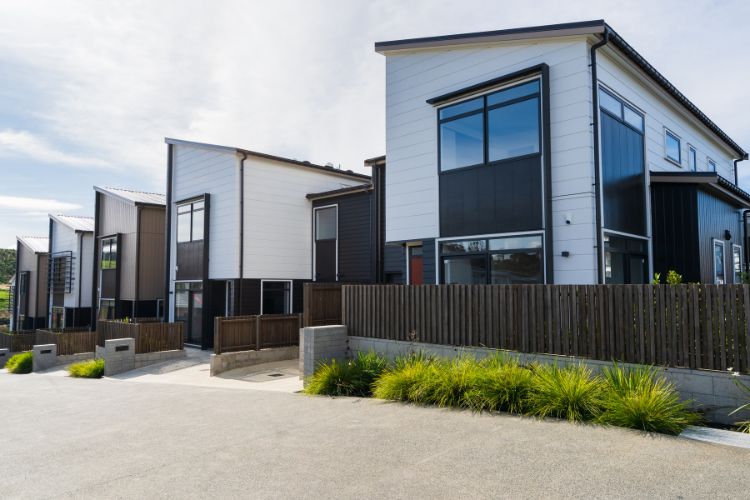In Queensland, property management is a crucial aspect of the real estate industry, ensuring the efficient operation and maintenance of residential and commercial properties.
Property managers play a vital role in overseeing the day-to-day operations of these properties, catering to the needs of both property owners and tenants. So, how many properties do property managers manage?
This guide aims to provide an informative and professional overview of the number of properties that property managers typically manage in Queensland, Australia.
Regulatory Framework in Queensland
The property management industry in Queensland is governed by a robust regulatory framework, primarily the Residential Tenancies and Rooming Accommodation Act 2008 and the Property Occupations Act 2014.
These legislative instruments outline the rights and responsibilities of property managers, landlords, and tenants, ensuring a fair and transparent operating environment.
In accordance with the Property Occupations Act 2014, property managers in Queensland must hold a valid real estate agent’s licence or be registered as a real estate salesperson.
This licencing requirement serves to uphold the industry’s standards, ensuring that property managers possess the necessary knowledge, skills, and ethical standards to effectively manage properties.
Industry Trends and Best Practises
The number of properties managed by a property manager in Queensland can vary significantly, influenced by a range of factors, including the size and complexity of the properties, the manager’s experience, and the size of the property management firm.
Average Number of Properties Managed
The average number of properties managed by a property manager in the state is approximately 100 to 150. This range is consistent with national trends.
It is important to note that this is an average figure, and the actual number of properties managed by an individual property manager can range from as low as 50 to as high as 300, depending on the specific circumstances.
Factors Influencing the Number of Properties Managed

Several factors can influence the number of properties a property manager in Queensland can effectively manage, including:
- Property Type and Size: Larger and more complex properties, such as commercial buildings or high-rise residential complexes, may require more time and attention from the property manager, reducing the overall number of properties they can manage effectively.
- Geographical Coverage: Property managers who oversee properties across a wider geographical area may have a lower overall number of properties due to the increased travel time and logistical challenges.
- Property Management Firm Size: Larger property management companies may have the resources and infrastructure to allow their property managers to handle a higher number of properties, while smaller firms may have a lower average per manager.
- Regulatory and Compliance Requirements: Stringent regulatory requirements, such as those related to rental property inspections, maintenance, and tenant management, can also impact the number of properties a professional property manager can effectively oversee.
Best Practises in Property Management
To ensure the efficient and effective management of properties, property managers in Queensland should adhere to the following best practises:
- Utilisation of Technology: Leveraging property management software and digital tools can help streamline workflows, improve communication, and enhance overall efficiency.
- Emphasis on Tenant Satisfaction: Prioritising tenant needs and providing responsive, high-quality service can help build strong tenant-landlord relationships and reduce tenant turnover.
- Rigorous Maintenance and Inspections: Conducting regular property inspections and proactively addressing maintenance issues can help preserve the value of the properties under management.
- Continued Professional Development: Ongoing training and education on industry regulations, best practises, and emerging trends can help property managers stay informed and adapt to a constantly evolving landscape.
The Role of Property Managers in Queensland’s Real Estate Landscape
Property managers in Queensland play a vital role in the state’s real estate industry, serving as the intermediaries between property owners and tenants. They are responsible for a wide range of tasks, including tenant screening, property maintenance and repairs, rent collection, and legal compliance.
One of the key responsibilities of a property manager is to ensure that the properties under their management are well-maintained and comply with relevant laws and regulations.
This includes conducting regular property inspections, coordinating repairs and renovations, and addressing any tenant concerns or complaints in a timely and professional manner.
In addition to property maintenance, property managers in Queensland also play a crucial role in tenant management. This involves screening potential tenants, negotiating lease agreements, and handling the day-to-day interactions with current tenants.
By providing excellent customer service and maintaining strong tenant-landlord relationships, property managers can help to ensure the long-term success of the properties they manage.
See also how property managers pay owners.
The Impact of Technology on Property Management

The property management industry in Queensland has undergone a significant transformation in recent years, driven by rapid advancements in technology.
Property management software and digital tools have become increasingly prevalent, enabling property managers to streamline their workflows, improve communication, and enhance overall efficiency.
One of the key benefits of technological integration in property management is the ability to automate and streamline various administrative tasks, such as rent collection, maintenance scheduling, and tenant communication.
This not only saves time and reduces the risk of errors, but it also allows property managers to focus on more strategic aspects of their role, such as portfolio optimisation and tenant relationship management.
Furthermore, the use of data analytics and predictive modelling in property management has become increasingly common.
By leveraging these technological capabilities, property managers in Queensland can make more informed decisions, anticipate potential issues, and proactively address the needs of their properties and tenants.
Wrapping Up
In conclusion, the number of properties managed by property managers in Queensland, Australia, is a complex and dynamic figure, influenced by a range of factors.
While the average range is typically between 100 and 150 properties per manager, the actual number can vary significantly depending on the specific circumstances.
By adhering to industry regulations, embracing best practises, and leveraging technology, property managers in Queensland can effectively oversee a portfolio of properties, ensuring the satisfaction of both property owners and tenants.
As the real estate market continues to evolve, property managers will play an increasingly vital role in the management and maintenance of residential and commercial properties across the state.

